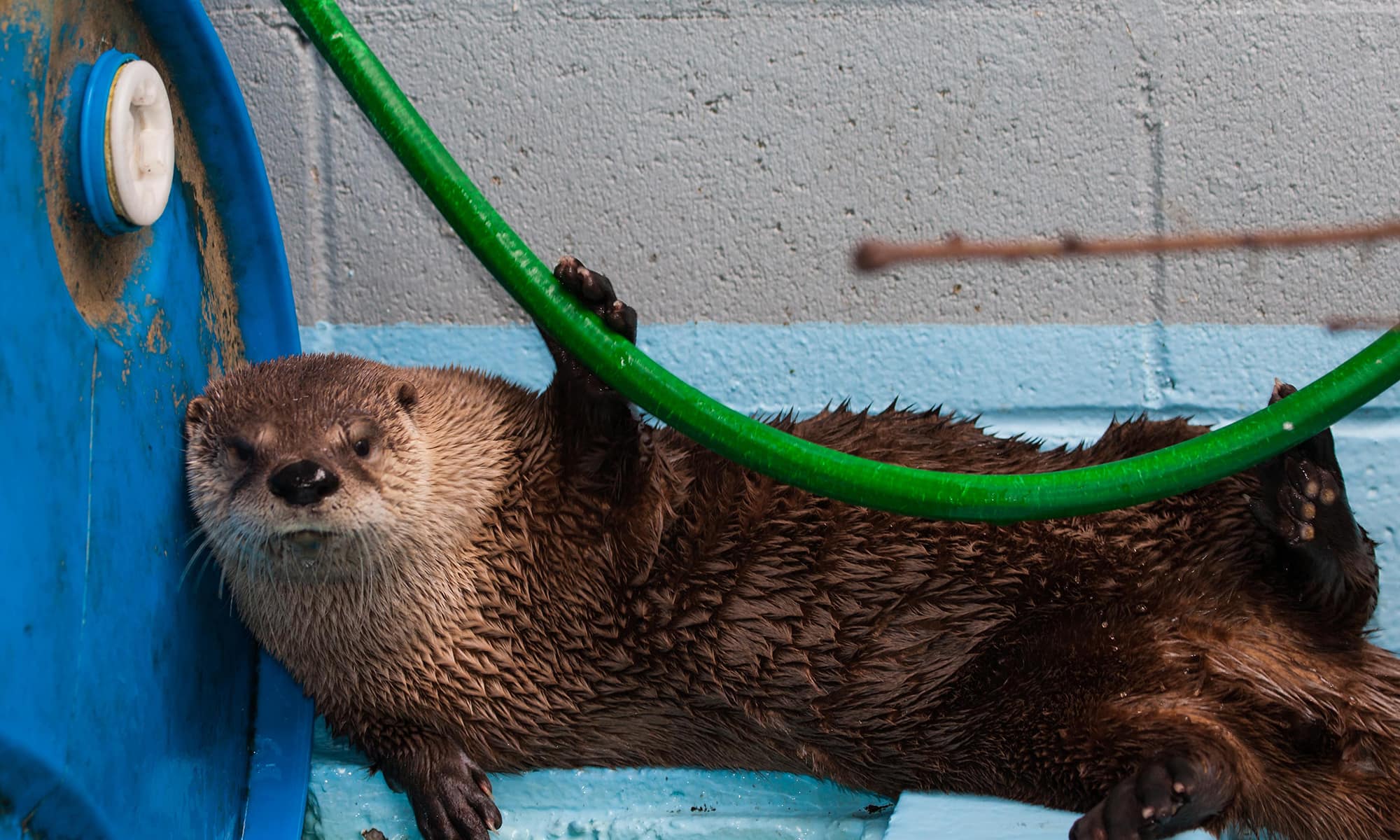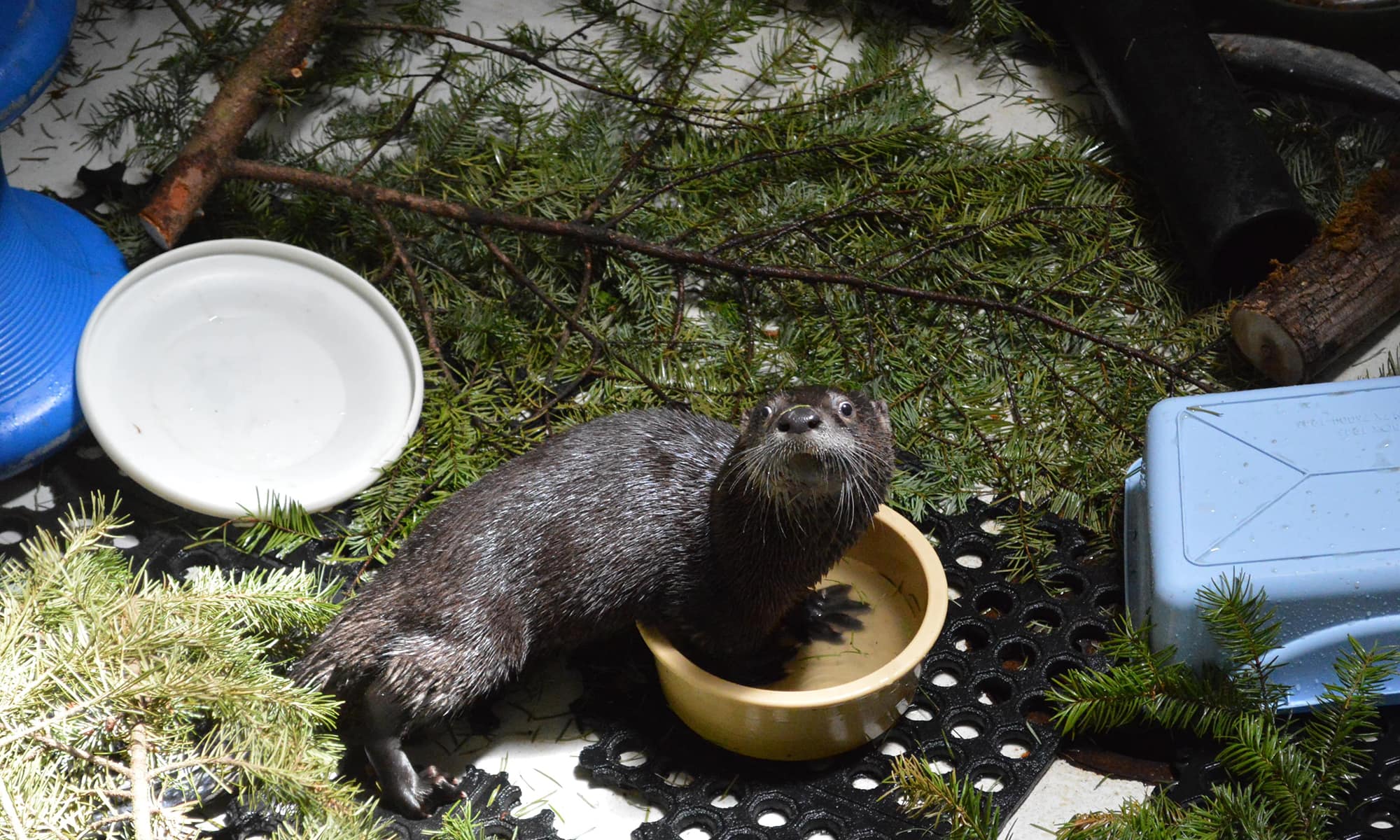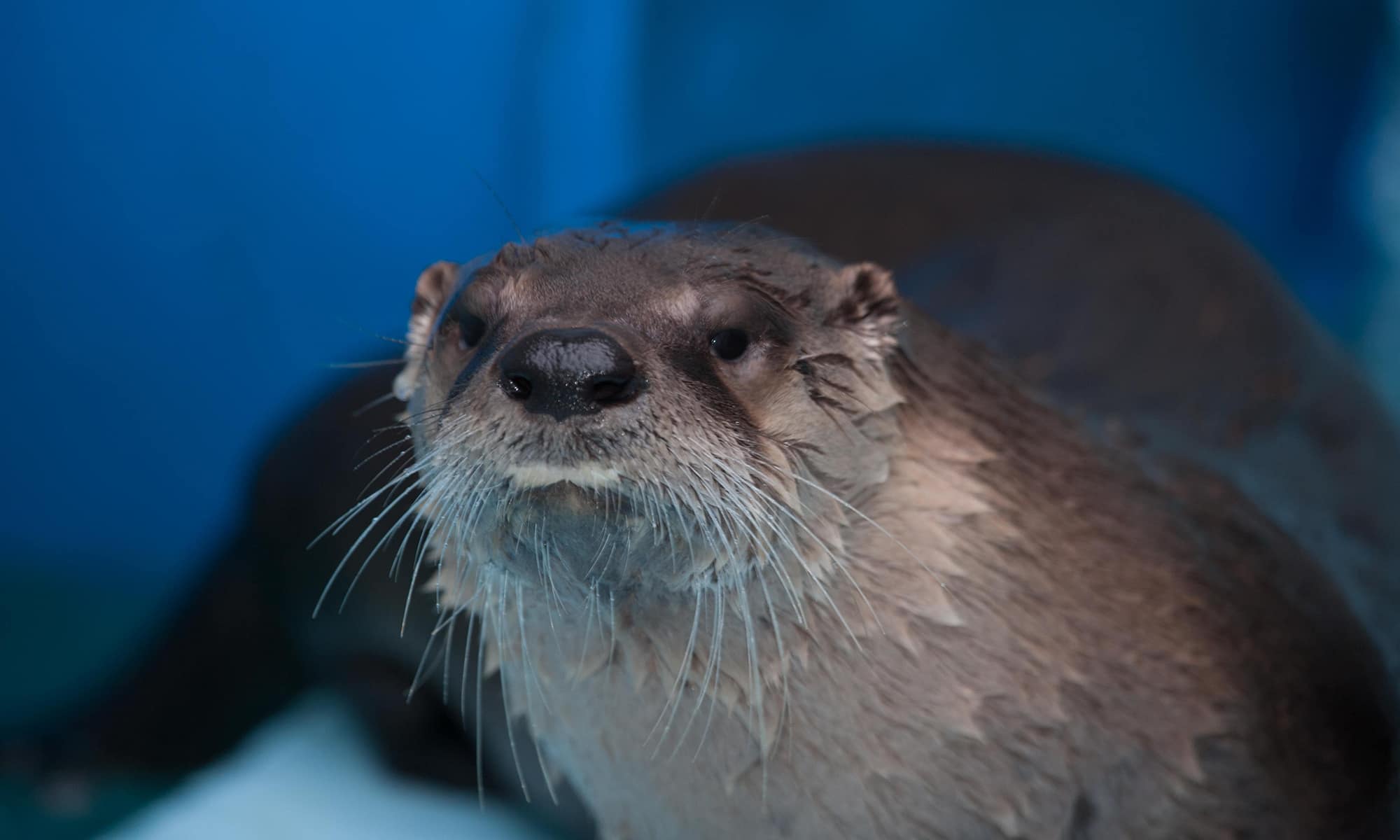Adopting a Cat
Please enjoy this video from Jackson Galaxy, a well-known cat behaviorist and host of...
Read moreNorth American River Otters (Lontra canadensis) were once found across most of North America and in all major waterways of the United States and Canada occupying one of the largest geographic areas of any North American mammal.
As European settlers moved west human settlements, habitat destruction, and over harvesting lead to the river otter becoming extirpated from some portions of its range.
Since the 1970’s reintroduction programs have been successful in restoring River Otters and expanding populations in 21 states as well as in Alberta, Canada.
Did you know? River Otters are known as indicator species of wetlands with ample high quality water. They are also used as a flagship species to save wetlands and other aquatic habitats.

River Otters are a medium sized semi-aquatic mammal with a cylindrical body, big nose, small ears and webbed feet. Adult River Otters are typically between 3 and 5 feet long with their tail making up almost half of their body length. They can weigh between 11 and 30 pounds and females tend to be smaller than males.
River Otters in the Pacific Northwest have long, dense fur that can vary in color from a deep chocolate brown to a more light chestnut color.
Did you know? River Otters have glands on their feet they use for scent marking to communicate with other otters.
Habitat:
River otters range in habitats from marine environments to high mountain lakes to desert canyons. They favor lowland marshes, swamps and bogs connected by rivers and lakes as well as coastal areas with an irregular shoreline. In the western U.S. areas with high beaver populations, permanent pools and good vegetation cover are important for good otter habitat.
Dens:
River Otters use anything from hollow logs, piles of boulders and abandoned Beaver lodges for their dens. They use these dens for shelter from weather and for giving birth.They are well hidden and located close to the water’s edge.

River Otters give birth to two to four pups in the spring, typically from March through May. Pups are able to swim at seven weeks old and are introduced to solid food at about nine weeks old. In late fall the pups leave their mother to establish their own territories. River Otters can live to be 8 to 9 years old in the wild.
River Otters are opportunistic carnivores and will eat a variety of prey species found in their environment. They mainly feed on slow moving fish species but will also eat crabs, crayfish, amphibians, small mammals, aquatic beetles, and birds.
Did you know? Studies indicate that the bulk of River Otter diet consists of non-game fish species.
River Otters are very intelligent and curious animals. They have well developed hearing and sense of smell. They spend most of their day foraging and exploring their home range. They are active day and night all year long but tend to be more nocturnal in high disturbance areas.

River Otters are social animals and will form two types of social groups; families which consist of adult females with her young of the year and a helper or two, and clans which are primarily males.
River Otters mainly communicate by olfaction. They make scent posts throughout their territory to announce their presence and minimize contact with other otters. They will also deposit scent on other areas frequently used such as haul outs, bedding sites, rolling sites, scrapes, dens and diggings.
They can also communicate vocally with shrill chirps, soft chuckles, low grunts, nasal snorts, hissing, and screams. They primarily do this to contact other otters, when they are under distress, and to alarm others of predators.
Did you know? Adult male River Otters can travel up to 150 miles in a year.
Prevent denning under structures:
To eliminate access to den sites under structures close entries under porches and sheds with ¼ inch mesh wire (hardware cloth), boards or other sturdy materials. In salt water areas it is recommended that aluminum or stainless-steel hardware cloth be used to prevent rust.
Eliminate access to other areas:
Construct a 4 foot high fence with 3 inch mesh wire to keep them out of enclosed areas. Be sure the fence goes at least 6 inches below the surface of the ground to prevent the otters from pushing it over. Be sure to check the fence regularly to look for animal’s burrows underneath the fence.
Prevent River Otters from eating fish in your pond:
Provide fish with good hiding places at the bottom of fish ponds using cinder blocks, drain tiles, wire baskets or upside down plastic crates.
Eliminate odor:
Commercial odor-eliminators found at hospital supply stores, drug stores and pet stores can be used. If the smell is still bad a bleach solution can be used (1½ cups of bleach to 1 gallon of water).
Burke Museum. December 23, 2014. Mammals of Washington: River Otter.
Feldhamer G.A., Thompson B.C. & Chapman J.A. (Eds). (2003). Wild Mammals of North America, Biology, Management, and Conservation (2nd ed.). Baltimore MD: The Johns Hopkins University Press.
Washington Department of Fish and Wildlife. December 23, 2014. Living with Wildlife: River Otters.
Images: Copyright PAWS 2015
Please enjoy this video from Jackson Galaxy, a well-known cat behaviorist and host of...
Read moreHow much will it cost to care for a new animal companion? It’s important to...
Read morePlease enjoy this blog post from Victoria Stilwell’s positively.com website....
Read more